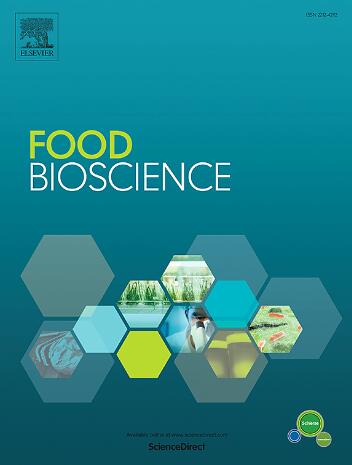Dynamic patterns of high-temperature Daqu attributes in continuous production: Investigating the impact of Muqu attributes, production site, and process heterogeneity
IF 4.8
1区 农林科学
Q1 FOOD SCIENCE & TECHNOLOGY
引用次数: 0
Abstract
Quality consistency of high-temperature Daqu (HTD) is crucial for optimizing the production and sensory attributes of Chinese sauce-flavor Baijiu. It is also essential for tracking microbiota succession, enzymatic activity, and metabolic profiles during continuous HTD production. Using multi-phase detection technologies, including high-throughput sequencing and metabolomic analysis, the effects of Muqu (mature HTD) addition and its attributes on HTD properties over multiple production rounds were examined. The results demonstrated that Muqu significantly influenced the microbial community of HTD, particularly increasing the relative abundance of key functional microorganisms, such as Kroppenstedtia and Thermomyces, thereby improving enzymatic activities which were saccharification, fermentation, and esterification activity etc, and optimizing the metabolic profile of HTD. Furthermore, the study revealed that the combined effects of Muqu attributes, production site, and process heterogeneity significantly influence inter-round variations in HTD properties, highlighting the importance of controlling production parameters to achieve consistent quality. These findings provide novel insights into the role of Muqu in shaping HTD microbial communities and metabolic functionally, offering a scientific foundation for optimizing industrial-scale HTD production and improving quality management strategies.

求助全文
约1分钟内获得全文
求助全文
来源期刊

Food Bioscience
Biochemistry, Genetics and Molecular Biology-Biochemistry
CiteScore
6.40
自引率
5.80%
发文量
671
审稿时长
27 days
期刊介绍:
Food Bioscience is a peer-reviewed journal that aims to provide a forum for recent developments in the field of bio-related food research. The journal focuses on both fundamental and applied research worldwide, with special attention to ethnic and cultural aspects of food bioresearch.
 求助内容:
求助内容: 应助结果提醒方式:
应助结果提醒方式:


